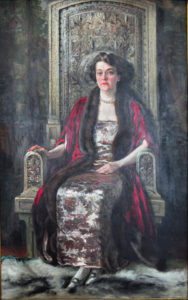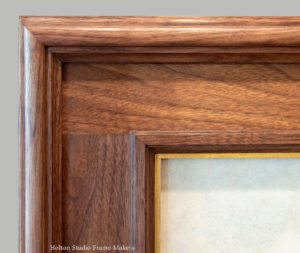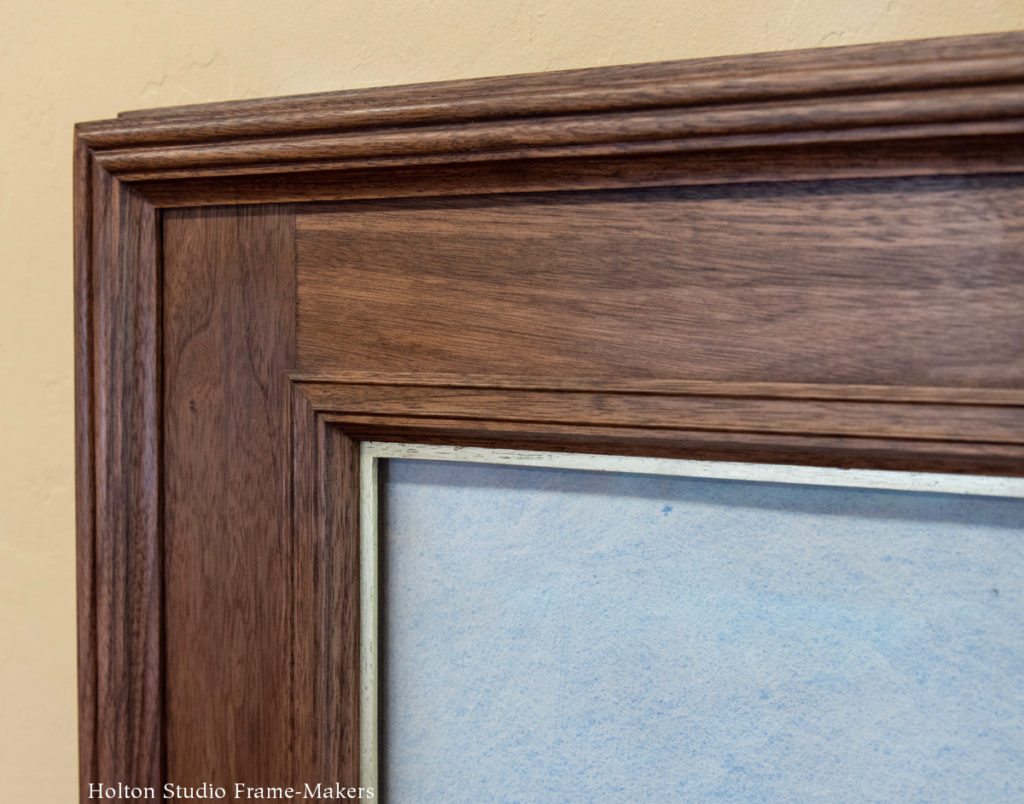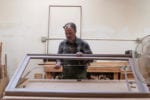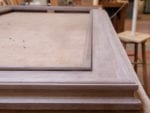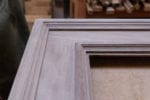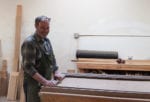San Francisco architect George Applegarth (1875-1972) was a big dreamer living in a time and place marked by big dreamers—like the colorful “Big Alma” Spreckels who dreamed of building a great art museum for her city of San Francisco.
Of humble roots, Alma’s smarts and ambition, combined with her imposing stature (she was 6′ tall) made her a force of nature. Determined to break into high society, she married sugar baron Adolph Spreckels. But that wasn’t enough to gain acceptance to the elite, so to boost her prestige she decided to establish herself as one of the City’s great arts patrons, and persuaded her husband to finance the dream of building a museum. To that end she hired George Applegarth to design a three-quarter scale replica of the Palais de la Légion d’Honneur in Paris. We recently framed Applegarth’s extraordinarily beautiful concept drawing of San Francisco’s Legion of Honor which he presented to Alma Spreckels in 1921. At 23″ x 52″, it’s an impressive piece, and finely and expertly executed. As such, it represents and expresses a dream, the beauty of its execution testament to the powerful ideal which architect and art patron shared—the vision of a great place for the cultivation of the arts in a city both adored. With an extraordinary perspective, the image also conveys a profound appreciation for the spectacular site of the museum, overlooking the Golden Gate, and part of the famously beautiful natural landscape San Francisco enjoys. So it expresses a shared longing for the fulfillment of the dreams of true civilization in the city which shaped these two, and which would, in turn, be shaped in good measure by them. 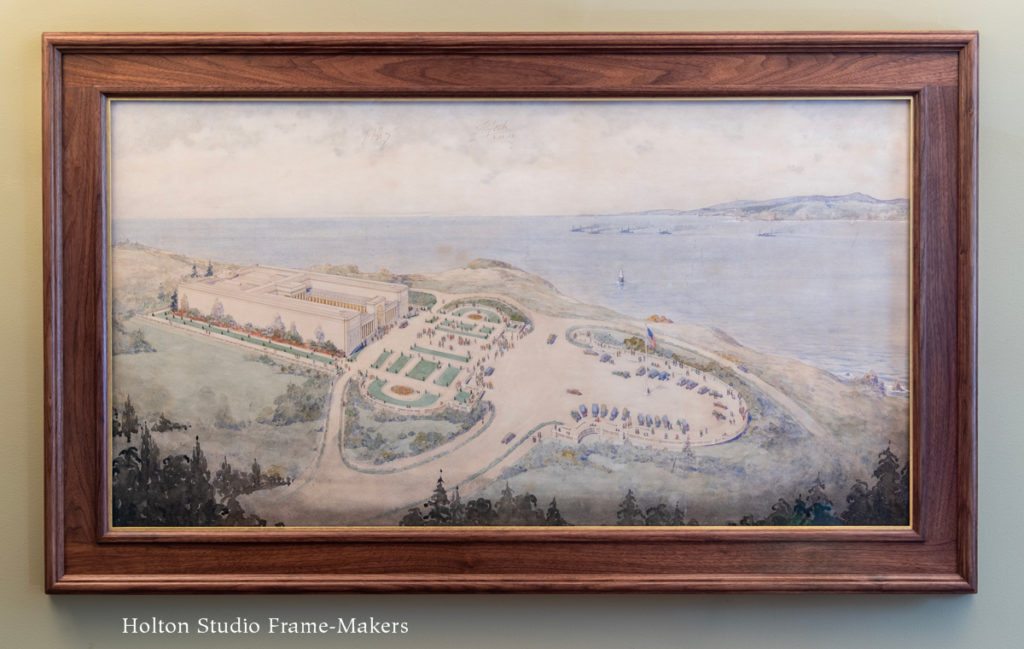 A work of art depicting a great place of art deserves an artful and beautiful place and setting of its own. We designed for this work a 4-1/4″ walnut cassetta frame with a gilt slip, and Trevor Davis did a beautiful job making it. (See process photos below.) We chose the cassetta construction for its architectural feel, and enhanced the form with restrained but suitably refined and formal detail in the profiles of the inner and outer moldings. The framing is, of course, archival: a gasket mat hidden under the rabbet of the frame separates the watercolor from the glazing, which is a u.v.-filtering and glare reducing acrylic.
A work of art depicting a great place of art deserves an artful and beautiful place and setting of its own. We designed for this work a 4-1/4″ walnut cassetta frame with a gilt slip, and Trevor Davis did a beautiful job making it. (See process photos below.) We chose the cassetta construction for its architectural feel, and enhanced the form with restrained but suitably refined and formal detail in the profiles of the inner and outer moldings. The framing is, of course, archival: a gasket mat hidden under the rabbet of the frame separates the watercolor from the glazing, which is a u.v.-filtering and glare reducing acrylic.
As a young man, Applegarth was pals with Jack London who, as a great story teller, dreamt for a living. As a sign of early ambition, it’s notable that the two once bicycled from Oakland to Yosemite. Applegarth declined, however, to share London’s dream of spending a year at sea on a whaler, and instead, in the 1890’s, decided to pursue his own dream of becoming an architect and, on the encouragement of his mentor Bernard Maybeck, went to Paris to study at the Ecole des Beaux Arts. On completion of his studies, he intended to settle on the East Coast. But it was 1906, a fateful year for the young architect’s hometown, and, again on Maybeck’s urging, Applegarth decided to return to help rebuild The City left in ruins by the Great Earthquake and Fire—joining Maybeck and many other dreamers in realizing a new metropolis rising phoenix-like from the wreckage.
But because he was just starting out on his career, Applegarth had no money for a studio, and so got creative and persuaded the newspaper, the San Francisco Call to agree to let him set up a studio on the top floor of their building. The price was right—free. The catch was that although the quake left the building still standing, it took the elevator out of commission, and Applegarth had to climb 40 stories each day to get to work! But from those heights, though, he had a panoramic view of San Francisco and could begin to help envision, and soon watch in actuality, his city coming back from the great disaster.
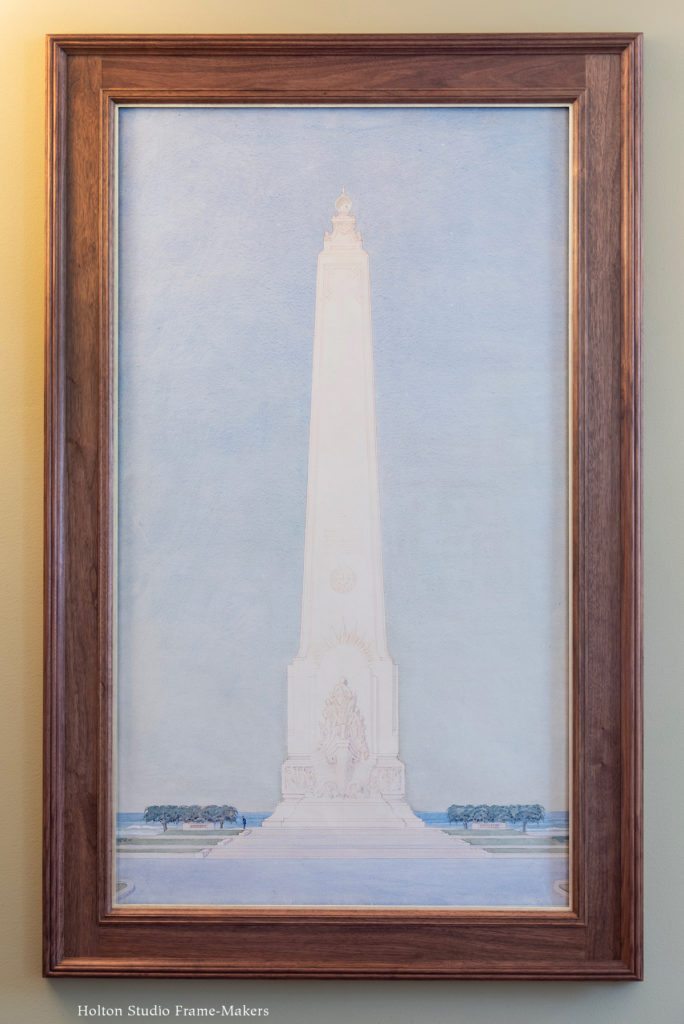 With energy and imagination like that, it was a remarkably short time before Applegarth and Maybeck, along with the likes of Daniel Burnham, Arthur Mathews and many others, including Alma and Adolph Spreckels, realized their dreams and rebuilt San Francisco. In 1915, to announce to the world its comeback, San Francisco hosted the Panama Pacific International Exposition. A second concept rendering we framed, shown at left, is Applegarth’s design for a monument to Portuguese navigators to be built for that event, although it was never constructed. The frame (corner detail below) is similar to but different in detail from the Legion of Honor frame.
With energy and imagination like that, it was a remarkably short time before Applegarth and Maybeck, along with the likes of Daniel Burnham, Arthur Mathews and many others, including Alma and Adolph Spreckels, realized their dreams and rebuilt San Francisco. In 1915, to announce to the world its comeback, San Francisco hosted the Panama Pacific International Exposition. A second concept rendering we framed, shown at left, is Applegarth’s design for a monument to Portuguese navigators to be built for that event, although it was never constructed. The frame (corner detail below) is similar to but different in detail from the Legion of Honor frame.
Pictures are key to the human quest to realize dreams. Pictures are how we form, express, celebrate, sustain, share and infect others with our visions—as George Applegarth did in presenting these great renderings to Big Alma Spreckels and the builders of the new San Francisco.
Process shots—
Trevor Davis made the frames. These show Trevor and the frame for the Palace of the Legion of Honor in the final stage just before it went to the finishing room.
